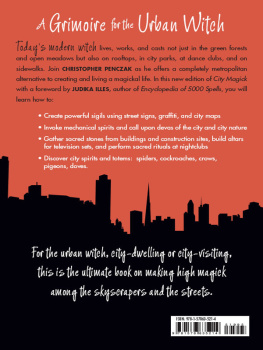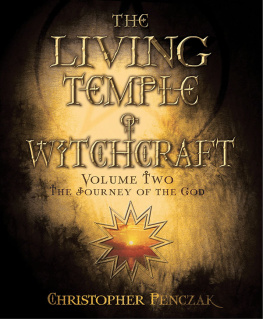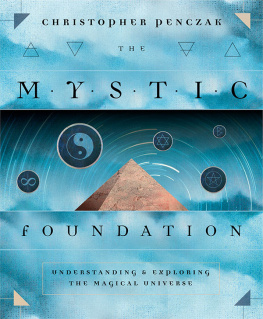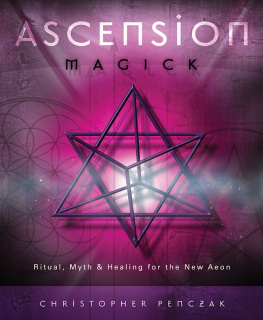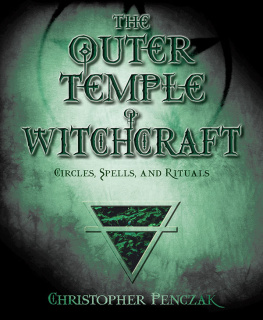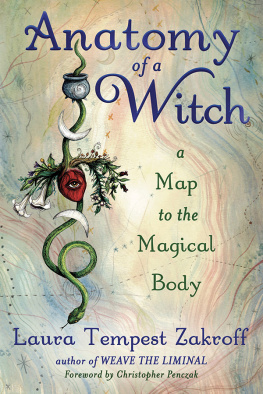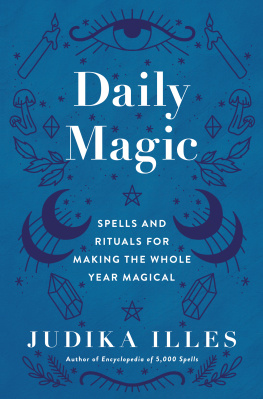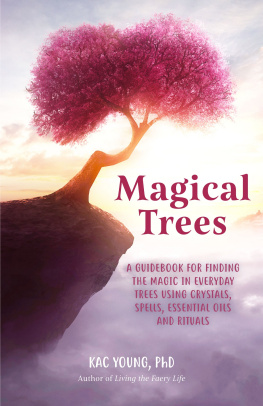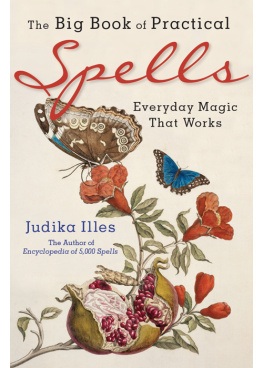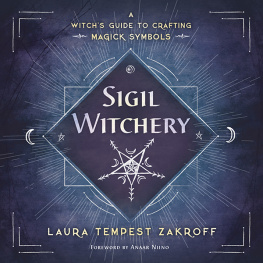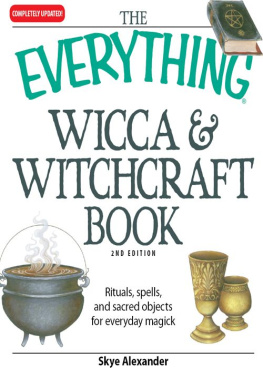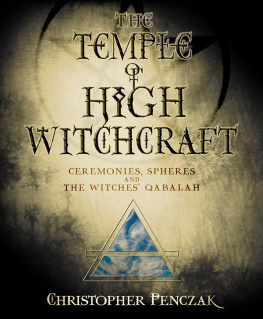Photographs on pages are by William Michie.
Photographs on are by Lena Jenkins.
Foreword
New York City's skyscrapers are distinctive, not just in appearance, but also in personality. The Empire State, Chrysler, and Flat Iron buildings, for instance, are easily distinguishable, one from another. Each resonates with a unique energy. In their own way, these towering buildings are living inhabitants of an urban landscape. If you think I'm only waxing metaphoric, then you haven't yet read Christopher Penczak's City Magick, a book that will open your eyes and cause you to reconsider all facets of your environment.
City Magick is a book that fills a need, that challenges entrenched beliefs about what is and isn't magical. Over the centuries, many have failed to see the magical power and potential inherent in cities. Philosophers have long perceived rustic life as somehow better and purer than urban living. Various back-to-nature movements have historically warned of the corrupting influence of cities. This perception transcends magic and witchcraft, but it holds special resonance in the witchcraft community.
There is a cherished ideal, one shared by witches and non-witches alike, of the solitary magical practitioner living at one with nature. This personmale or femaleresides in perfect harmony with Earth's natural rhythms. She or he communes with animals, raises plants as needed, or harvests them from secret wild placesethically, of courseand is just as comfortable and at home in nature as the forest's native flora andfauna. This person may brag that their magical senses have become so heightened that they are no longer able to live in the hustle and bustle of the city, with the added implication that there is something deadened about those who do.
This rustic ideal is a goal to which many aspire. And, of course, this idealthis idyllis not untrue. It is based on fact. Such witches do exist, now as in the past, and there can be tremendous beauty and power to be found in synchronizing one's life to the wild. It is a potentially sacred idyll that encourages us to recall the blessed potency of plants and celebrates the bonds between humans and beings of other species. It may also be a vestigial memory of the witch-hunting era, when discreet safety to practice as one pleased could be attained by retreating from civilization into vigilant solitude.
And yetbecause it celebrates a way of life that is accessible to comparatively few people in the crowded, industrialized, technologically-oriented twenty-first centuryit is also a potentially paralyzing ideal, one that may prevent practitioners from grasping their maximum magical potential right now, no matter where they live, no matter what surrounds them.
This rustic vision is not the whole story, however. Another magical landscape exists, too, albeit one less celebrated by poets and more frequently overlooked. Cities are also magical hot spots. Seekers after knowledge, magical practitioners, and witches of all kinds have historically congregated in urban centers. This is not merely a twenty-first-century affectation, some rationale to make us feel better about being divorced from nature. The Greek Magical Papyri in Translation (The University of Chicago Press, 1996) pays testament to the vibrant community of magical practitioners who inhabited the sprawling urban mass of Alexandria, Egypt in the centuries just preceding and after the dawning of the Common Era.
Then and now, city witches walk in harmony with their surroundings, just like their country cousins. City Magick reminds us that magic surrounds us and is always at hand, if only we can recognize it and learnto work with it. Urban trees are no less magical than those of the woods. The city is filled with creatures who are familiar in every sense of that word: mammals, birds, and insects, and our bonds with them are potentially as powerful as they would be with more exotic or elusive species. You can grasp your full magical potential now, no matter where you are.
I have a confession. The very first time I saw a copy of City Magick, shortly after its initial publication, I was jealousI wished I were its author. I remember the moment distinctly. I was in a Borders bookstore in Paramus, New Jersey, one with a particularly miniscule metaphysical section. As I walked past the lone bookshelf, the title City Magick transfixed me, calling out to me like a song title, perhaps the bridge between two beloved tunes of my childhood, the Lovin' Spoonful's Do You Believe in Magic? and Summer in the City. Drawn to pick up the book, I started reading it in the store. The more I read, the more City Magick resonated with me.
I hadn't yet met ChristopherI would a year later in another New Jersey town, where we would discuss our mutual love of music and comic booksbut City Magick had already convinced me that he was a kindred spirit, someone who shared my passionate love of magic and who, like me, had personally experienced the living pulse and heartbeat of the city. In his introduction to City Magick, Christopher writes that he was inspired by Grant Morrison's comic book series, The Invisibles. For me, City Magick evokes another comic book series: Vertigo's Madame Xanadu, which obliquely traces the history of witchcraft from the wilds of pre-Arthurian Britain to the gritty streets of Greenwich Village. It is also reminiscent of Neil Gaiman's Neverwhere in which the city of London itself seems to breathe and pulse and behave as an active participant in the narrative.
Now, some ten years later, rereading City Magick, what strikes me is the revolutionary nature of this book. Too many metaphysical books recycle the same information, but City Magick remains fresh and unique. No other book explores this material in quite the same way or pushes us to expand our magical horizons in quite the same directions. Somethingelse that struck me upon rereading City Magick is just how rapidly our technology has evolved and yet how relevant City Magick remains, because the lessons Christopher teaches are not limited to specific types of technology. Instead, they are portals to a modern, urban shamanism, one that is potentially accessible to all.
In these pages, Christopher takes us on a magical tour, and like the best tour guides, he opens our eyes to help us see and comprehend in new and different ways. He challenges us to recognize the magic that eternally surrounds us, no matter where we are. Each and every day, city dwellers and workers walk past the urban landscape without really seeing it, ignoringor trying to ignoregraffiti, subways, power lines, rats, and pigeons. Christopher doesn't sugarcoat the city. Instead he encourages us to stop and really appreciate its full powerthe good, the bad, the ugly, and the sublime. By extension,

